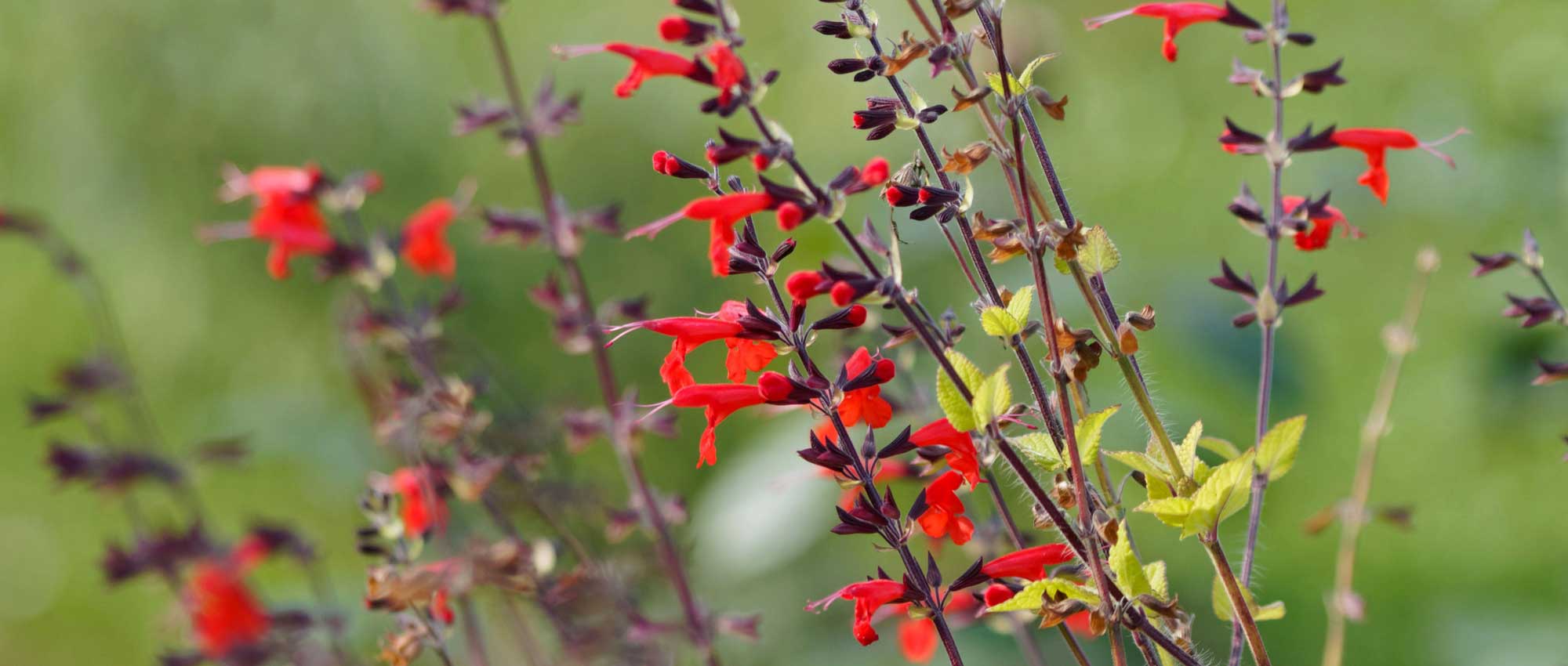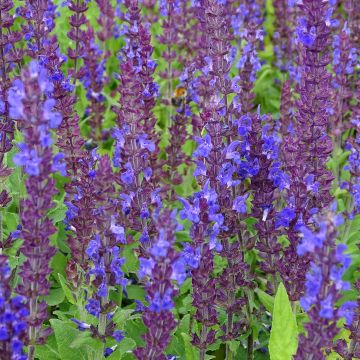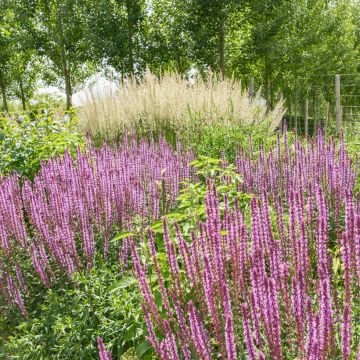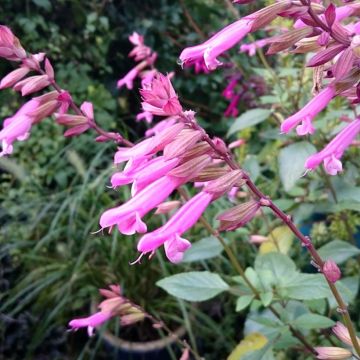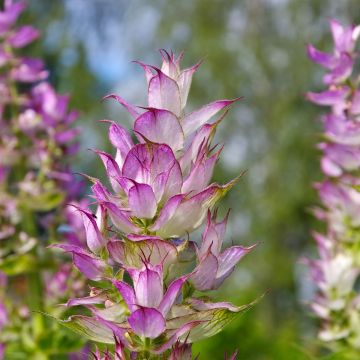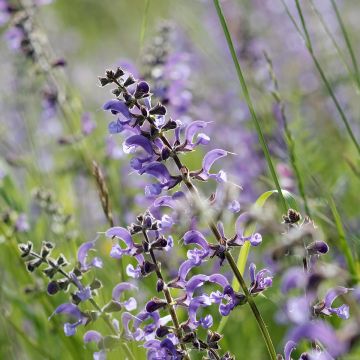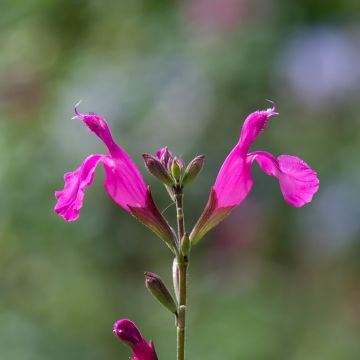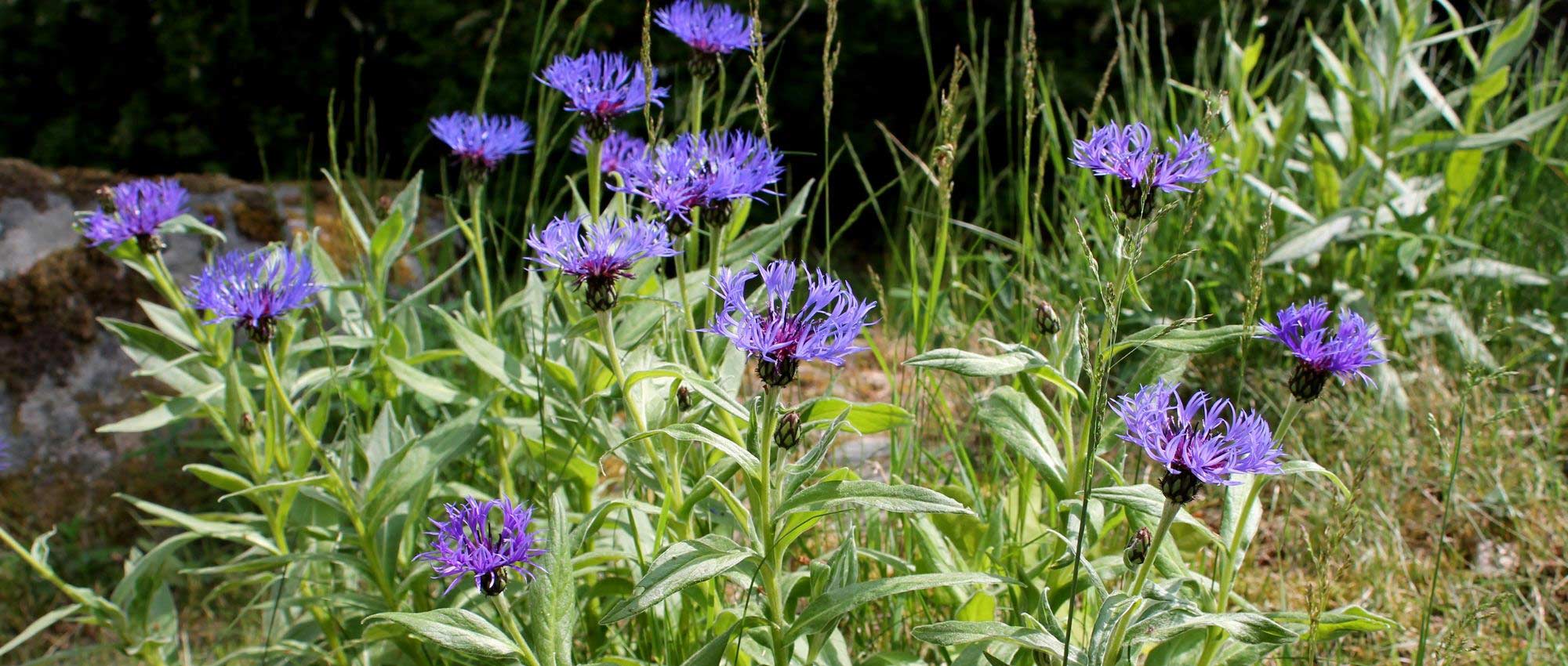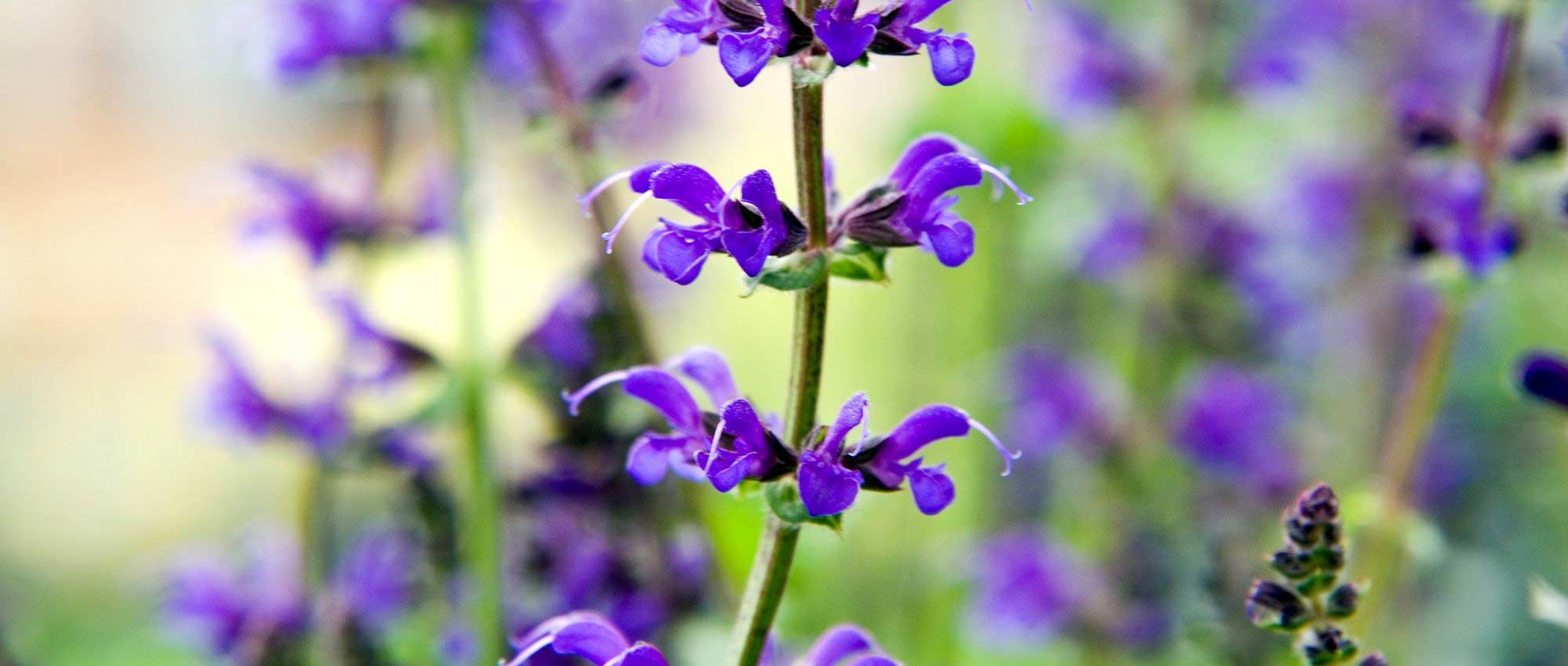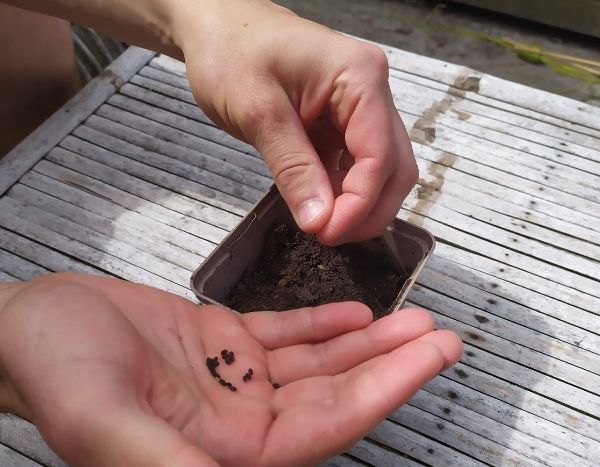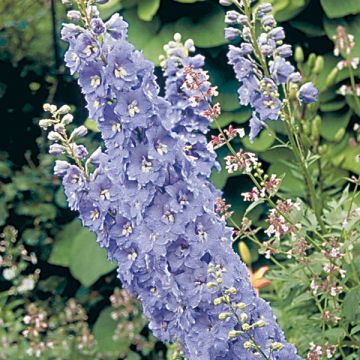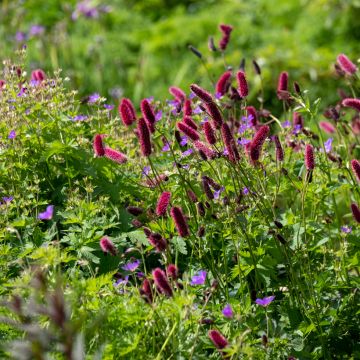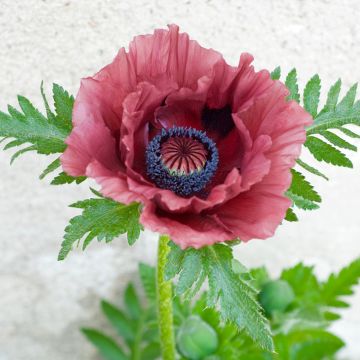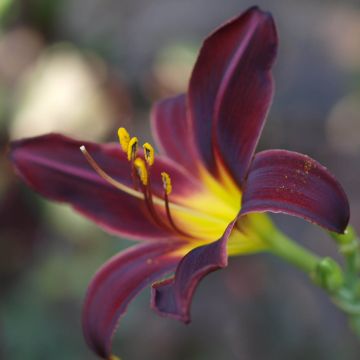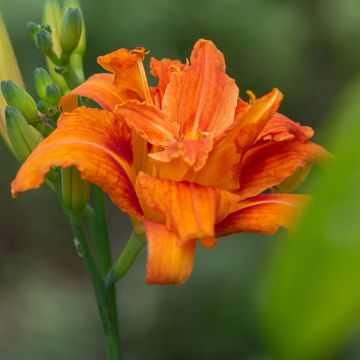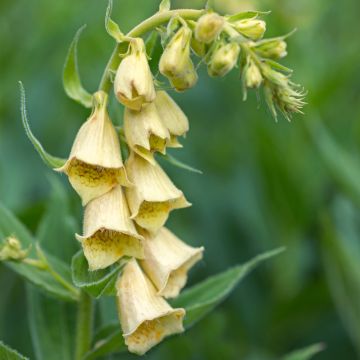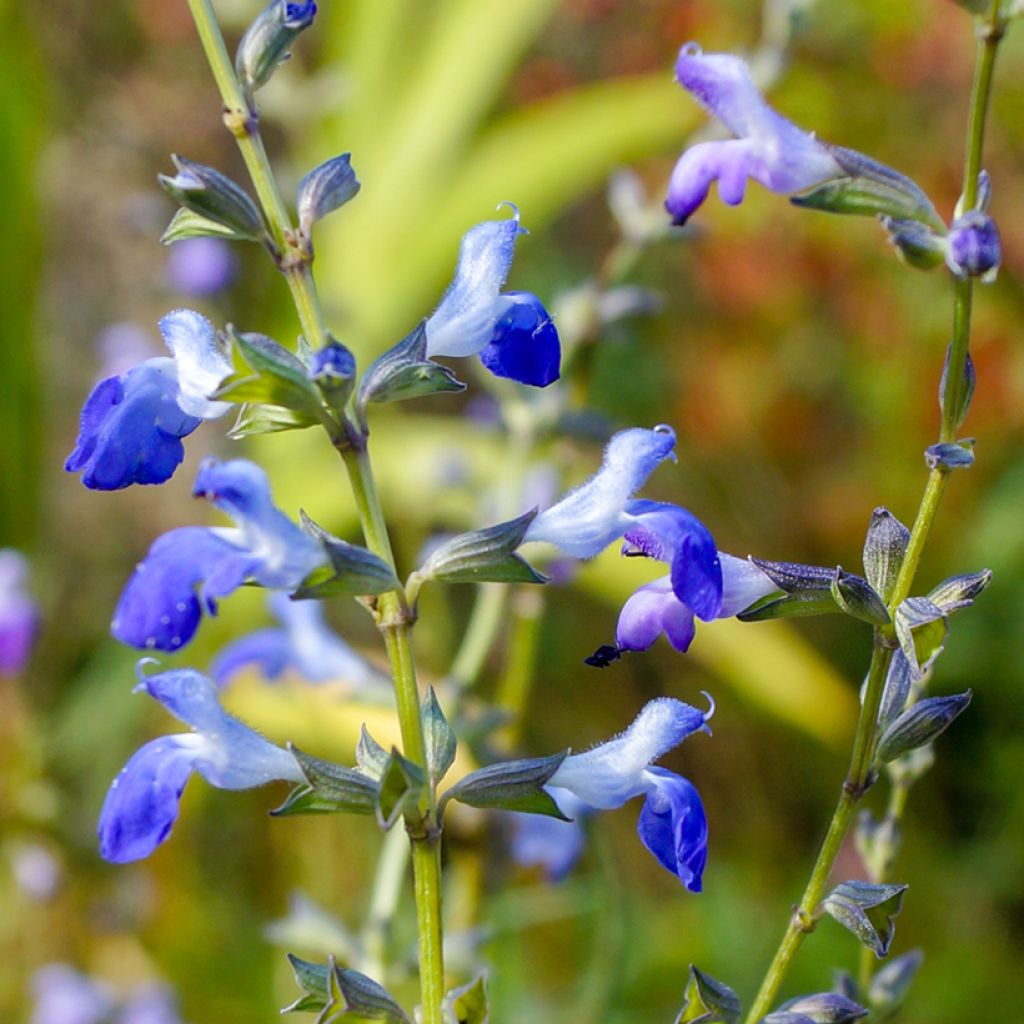

Salvia reptans 'West Texas Form'
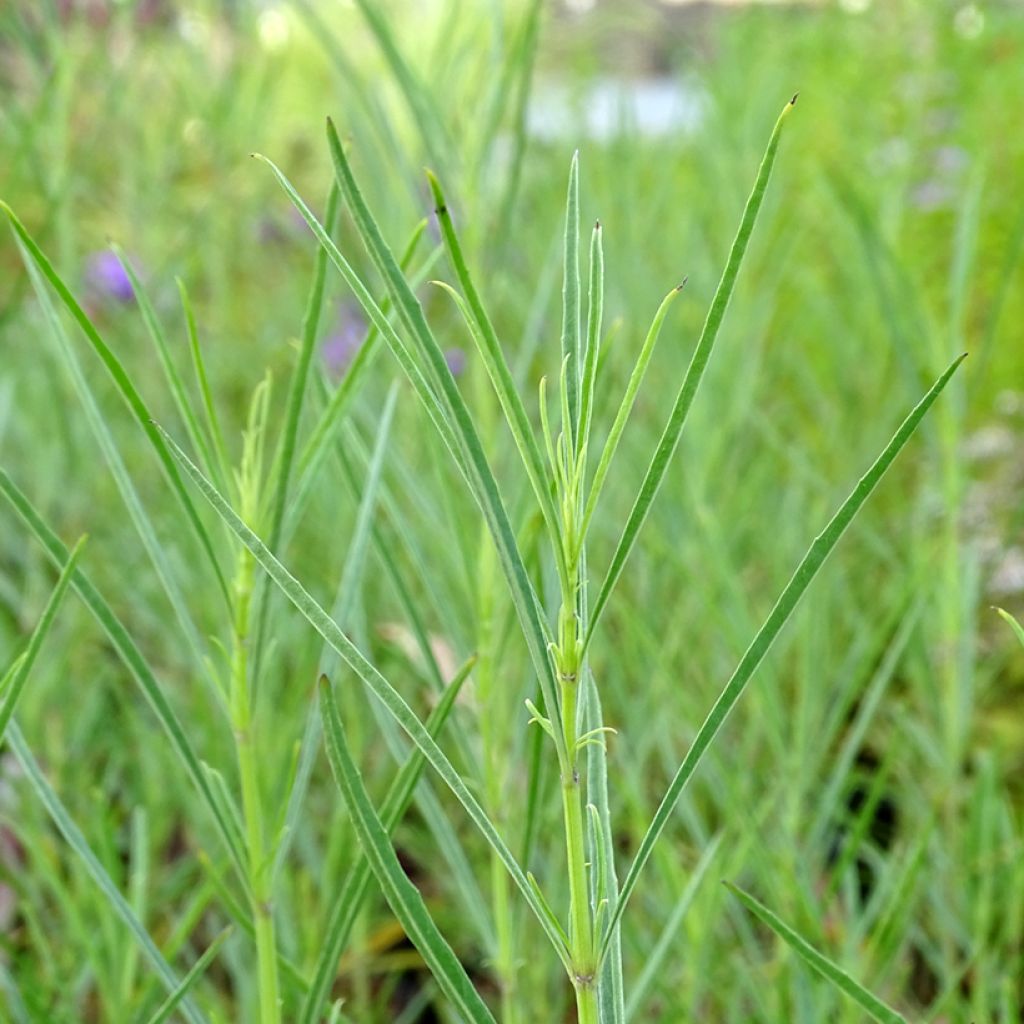

Salvia reptans 'West Texas Form'
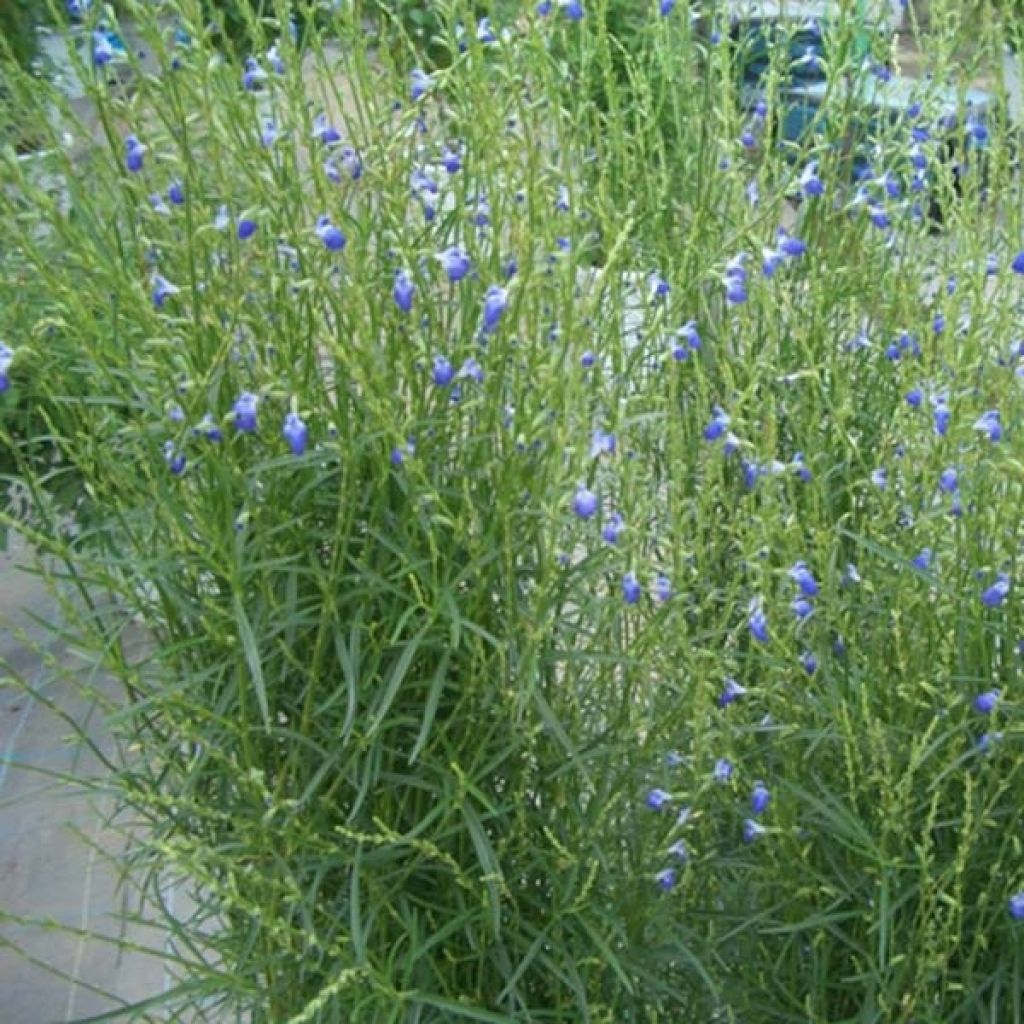

Salvia reptans 'West Texas Form'
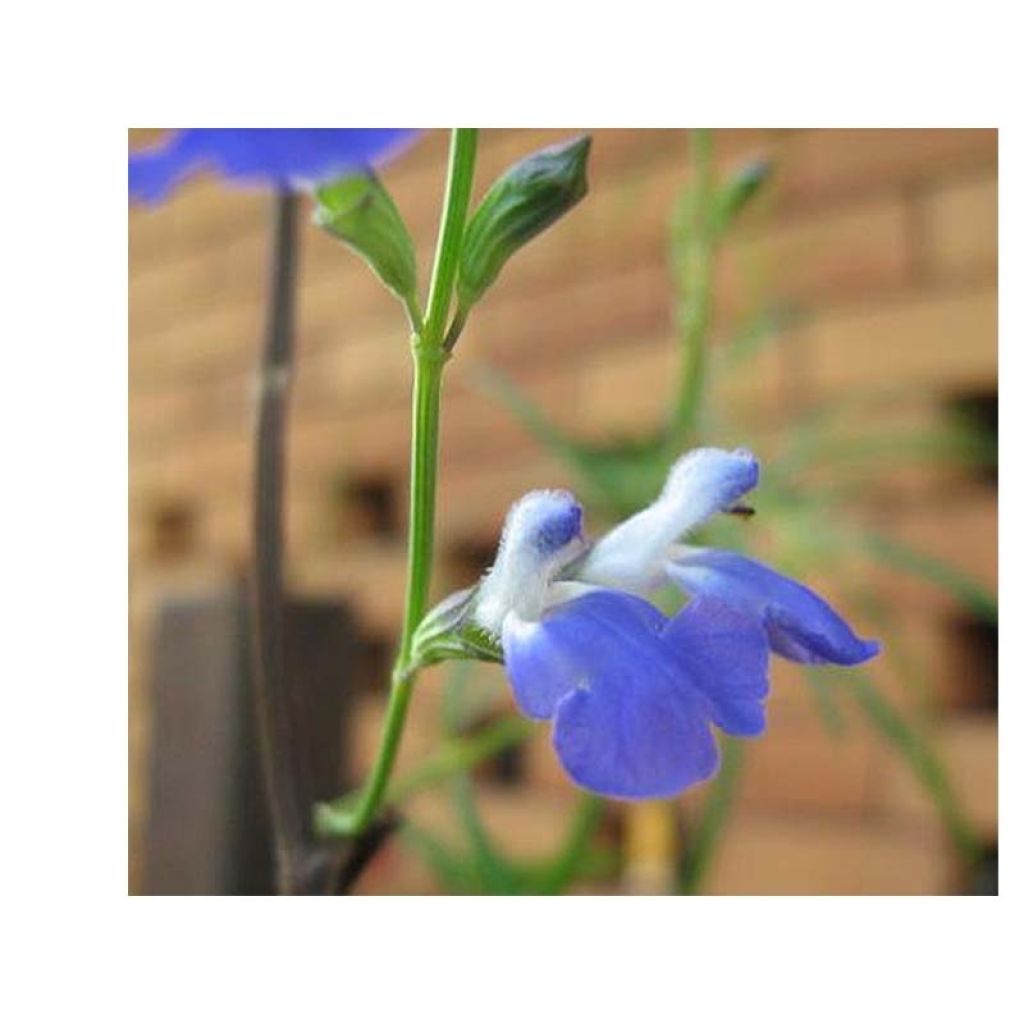

Salvia reptans 'West Texas Form'
Salvia reptans 'West Texas Form'
Salvia reptans West Texas form
West Texas Grass Sage, Creeping Sage
The package arrived in good condition on the scheduled date. All the plants were well hydrated, only a few labels had fallen to the bottom of the box. Quickly planted, they all seem to have taken root, except for the campanulate Elisabeth, which was devoured by slugs/snails and did not produce new shoots afterward. As for the Salvia reptans West Texas, it is growing many small leaves. I must say I take good care of it, and with these current scorching temperatures, regular watering can only help it settle in well.
Catherine, 03/07/2025
Special offer!
Receive a €20 voucher for any order over €90 (excluding delivery costs, credit notes, and plastic-free options)!
1- Add your favorite plants to your cart.
2- Once you have reached €90, confirm your order (you can even choose the delivery date!).
3- As soon as your order is shipped, you will receive an email containing your voucher code, valid for 3 months (90 days).
Your voucher is unique and can only be used once, for any order with a minimum value of €20, excluding delivery costs.
Can be combined with other current offers, non-divisible and non-refundable.
Home or relay delivery (depending on size and destination)
Schedule delivery date,
and select date in basket
This plant carries a 12 months recovery warranty
More information
We guarantee the quality of our plants for a full growing cycle, and will replace at our expense any plant that fails to recover under normal climatic and planting conditions.

Would this plant suit my garden?
Set up your Plantfit profile →
Description
The Salvia reptans 'West Texas Form' is a superb perennial sage native to the Texan mountains, known for its erect habit and remarkably colourful cobalt blue flowering. This rare cultivar delights with its fluid and light silhouette that comes alive in late summer with a mist of small flowers that catch the eye. Very useful in a garden without irrigation, perfect in rockeries, this plant is also hardy, rather accommodating and thrives in ordinary garden soil if properly drained.
The Salvia reptans (synonym S.leptophylla) 'West Texas Form' was discovered in Texas in the Davis Mountains at an altitude of 1200m (3937ft). Like all salvias, it belongs to the lamiaceae family. Instead of spreading its vegetation on the ground like the usual type, this cultivar forms upright stems that assemble into a vigorous clump that will rise to 90cm (35in) or 1m (3ft) above the ground at flowering time. Its stems bear thin green leaves like needles, aromatic when crushed. Flowering begins in September and continues until the first frosts. At the tips of the leafy stems, loose spike-like inflorescences appear. The bilabiate flowers measure about 1cm (0in) and are intensely blue in colour. Honey-bearing and nectar-bearing, they are highly prized by butterflies and bees.
The Salvia 'West Texas Form' is hardy enough to be planted in many regions, provided it benefits from well-drained soil. It excels on dry slopes, in rockeries, and in borders. For example, associate it with gauras, the Sunset Boulevard evening primrose, the Erigeron karvinskianus, and Californian poppies. Also, combine it with old roses and Nepeta faassenii, rose campions Lychnis coronaria, and light grasses (Stipa, Calamagrostis). Its uniquely blue flowers complement the stars of asters and stand out beautifully against the autumn foliage of Cotinus and spindle trees.
With over 900 species of annuals, perennials, and shrubs, distributed worldwide except in very cold regions and the tropical forest, the genus Salvia is the most diverse in the lamiaceae family. The name Salvia, dating back to Roman times, derives from the Latin salvus 'healthy' in reference to the medicinal properties of common sage.
Salvia reptans 'West Texas Form' in pictures






Flowering
Foliage
Plant habit
Botanical data
Salvia
reptans
West Texas form
Lamiaceae
West Texas Grass Sage, Creeping Sage
North America
Other Salvia - Sage
View all →Planting and care
Install the Salvia 'West Texas Form' preferably in a well-drained soil that does not retain too much moisture in winter. Well adapted to rocky and rather poor terrains, this sage also adapts to ordinary garden soils that are not too clayey and compact. Limestone is not a problem. It well tolerates drought and withstands brief freezes of the order of -15°C (5°F). Plant in a location with very sunny exposure, but in hot and dry regions, this plant prefers the shade in the afternoon. It is a sober and undemanding plant, very floriferous, ideal in a natural garden.
Planting period
Intended location
Care
Planting & care advice
-
, onOrder confirmed
Reply from on Promesse de fleurs
Similar products
Haven't found what you were looking for?
Hardiness is the lowest winter temperature a plant can endure without suffering serious damage or even dying. However, hardiness is affected by location (a sheltered area, such as a patio), protection (winter cover) and soil type (hardiness is improved by well-drained soil).

Photo Sharing Terms & Conditions
In order to encourage gardeners to interact and share their experiences, Promesse de fleurs offers various media enabling content to be uploaded onto its Site - in particular via the ‘Photo sharing’ module.
The User agrees to refrain from:
- Posting any content that is illegal, prejudicial, insulting, racist, inciteful to hatred, revisionist, contrary to public decency, that infringes on privacy or on the privacy rights of third parties, in particular the publicity rights of persons and goods, intellectual property rights, or the right to privacy.
- Submitting content on behalf of a third party;
- Impersonate the identity of a third party and/or publish any personal information about a third party;
In general, the User undertakes to refrain from any unethical behaviour.
All Content (in particular text, comments, files, images, photos, videos, creative works, etc.), which may be subject to property or intellectual property rights, image or other private rights, shall remain the property of the User, subject to the limited rights granted by the terms of the licence granted by Promesse de fleurs as stated below. Users are at liberty to publish or not to publish such Content on the Site, notably via the ‘Photo Sharing’ facility, and accept that this Content shall be made public and freely accessible, notably on the Internet.
Users further acknowledge, undertake to have ,and guarantee that they hold all necessary rights and permissions to publish such material on the Site, in particular with regard to the legislation in force pertaining to any privacy, property, intellectual property, image, or contractual rights, or rights of any other nature. By publishing such Content on the Site, Users acknowledge accepting full liability as publishers of the Content within the meaning of the law, and grant Promesse de fleurs, free of charge, an inclusive, worldwide licence for the said Content for the entire duration of its publication, including all reproduction, representation, up/downloading, displaying, performing, transmission, and storage rights.
Users also grant permission for their name to be linked to the Content and accept that this link may not always be made available.
By engaging in posting material, Users consent to their Content becoming automatically accessible on the Internet, in particular on other sites and/or blogs and/or web pages of the Promesse de fleurs site, including in particular social pages and the Promesse de fleurs catalogue.
Users may secure the removal of entrusted content free of charge by issuing a simple request via our contact form.
The flowering period indicated on our website applies to countries and regions located in USDA zone 8 (France, the United Kingdom, Ireland, the Netherlands, etc.)
It will vary according to where you live:
- In zones 9 to 10 (Italy, Spain, Greece, etc.), flowering will occur about 2 to 4 weeks earlier.
- In zones 6 to 7 (Germany, Poland, Slovenia, and lower mountainous regions), flowering will be delayed by 2 to 3 weeks.
- In zone 5 (Central Europe, Scandinavia), blooming will be delayed by 3 to 5 weeks.
In temperate climates, pruning of spring-flowering shrubs (forsythia, spireas, etc.) should be done just after flowering.
Pruning of summer-flowering shrubs (Indian Lilac, Perovskia, etc.) can be done in winter or spring.
In cold regions as well as with frost-sensitive plants, avoid pruning too early when severe frosts may still occur.
The planting period indicated on our website applies to countries and regions located in USDA zone 8 (France, United Kingdom, Ireland, Netherlands).
It will vary according to where you live:
- In Mediterranean zones (Marseille, Madrid, Milan, etc.), autumn and winter are the best planting periods.
- In continental zones (Strasbourg, Munich, Vienna, etc.), delay planting by 2 to 3 weeks in spring and bring it forward by 2 to 4 weeks in autumn.
- In mountainous regions (the Alps, Pyrenees, Carpathians, etc.), it is best to plant in late spring (May-June) or late summer (August-September).
The harvesting period indicated on our website applies to countries and regions in USDA zone 8 (France, England, Ireland, the Netherlands).
In colder areas (Scandinavia, Poland, Austria...) fruit and vegetable harvests are likely to be delayed by 3-4 weeks.
In warmer areas (Italy, Spain, Greece, etc.), harvesting will probably take place earlier, depending on weather conditions.
The sowing periods indicated on our website apply to countries and regions within USDA Zone 8 (France, UK, Ireland, Netherlands).
In colder areas (Scandinavia, Poland, Austria...), delay any outdoor sowing by 3-4 weeks, or sow under glass.
In warmer climes (Italy, Spain, Greece, etc.), bring outdoor sowing forward by a few weeks.






























